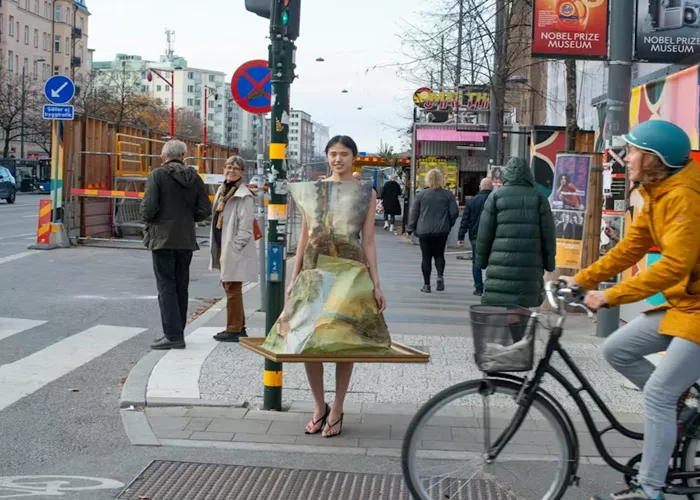Ellen Hodakova Larsson, a 32-year-old Swedish designer, has gained recognition for her innovative approach to fashion by transforming discarded materials into stylish creations. Her journey began at 14 when she attended a training camp as a competitive equestrian. There, she was paired with a large and spirited horse that taught her to trust her instincts. “I told myself, ‘Never be afraid of this,’” Larsson recalls. This lesson in self-confidence has been crucial in her career.
In September, Larsson received the prestigious LVMH Prize for Young Fashion Designers, which comes with a €400,000 grant and a year of mentorship from LVMH executives. This award is significant as it highlights her brand, Hodakova, which challenges the fast fashion model by focusing on sustainability. Notably, this is the first time the prize has been awarded to a brand that directly addresses the issue of overconsumption in fashion.
Larsson’s work reflects a growing awareness among young designers that creativity must be paired with efforts to improve the industry’s sustainability. Drawing from her upbringing on a farm, she utilizes deadstock, vintage pieces, and repurposed materials in her designs. This approach is both a creative challenge and a personal commitment to responsible fashion.
Growing up in rural Sweden, Larsson learned valuable skills from her family. Her mother, a fur seamstress, taught her to find potential in secondhand items. “We learned that you can make whatever you want from nothing,” she explains. This mindset shaped her design philosophy during her studies at the Swedish School of Textiles.
Larsson’s creative process involves deconstructing and reassembling materials into new forms. She has created garments from unexpected items like serving trays and old boots. Her admiration for designers like Martin Margiela and Elsa Schiaparelli influences her work, blending playful experimentation with structured elegance.
Her latest collection serves as a reflection of her childhood memories, incorporating elements such as riding boots inspired by her equestrian past and dresses made from her mother’s sewing scraps. Each piece invites viewers to reconsider traditional notions of gender roles and luxury by flipping garments inside out or upside down.
Despite her success, Larsson remains critical of the fashion industry. She emphasizes that style is more enduring than fleeting trends. With plans to use her LVMH mentorship to develop an AI model for sorting secondhand materials, she aims to create a more organized system for sustainable fashion production.
Larsson believes that change is necessary for the future of fashion. “Everyone knows that we can’t keep on this way because our Earth will explode,” she states. Her commitment to sustainability is not just about fashion; it’s about fostering a new mindset towards consumption and creativity in the industry.
Related topics:
- Victoria Beckham Turns Heads in Stunning Backless White Dress at Her New Collection Launch
- Lila Moss Declares ‘Hotel Slippers’ the Must-Have Footwear Trend for Autumn
- Can You Rock Barrel-Leg Jeans? Fashion Editors Experiment with the Trend Adored by Celebrities

